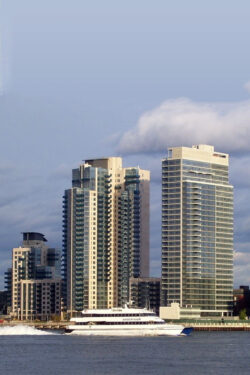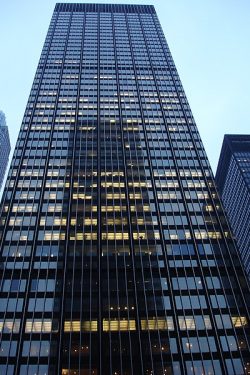
Nearly four hundred years after its founding, New York, the city that grew and grew through “creative destruction,” is a mature metropolis. If New York were a forest, we would describe it as having reached its climax species in many areas, whether in skyscrapers built to their maximum zoning envelope, or in a prevailing belief in many neighborhoods that growth, at least in scale, is undesirable. New York of the future will likely look much the same as it does today-just as Rome, Paris, or London have set their essential identities.
Yet, as change and growth of population are certain, how can the city adapt and advance in the twenty-first century? Recognizing the need for a great majority of New York’s buildings to be modernized, but not replaced, the Museum examined “greening” the city by spotlighting a range of innovative projects that feature landmark preservation, adaptive re-use, reinvented industrial sites, and sustainable development.


Williamsburg Waterfront
Shaun Donovan, Stephen B. Jacobs, Jeffery E. Levine, Dan Kaplan, Ron Moelis, Tom O’Gara, Robert Powers, Philip Tugendrajch
New Verizons
Douglas Mass, Richard A. Cook, Frank Frankini, Dan Shannon, Douglas Winshall
